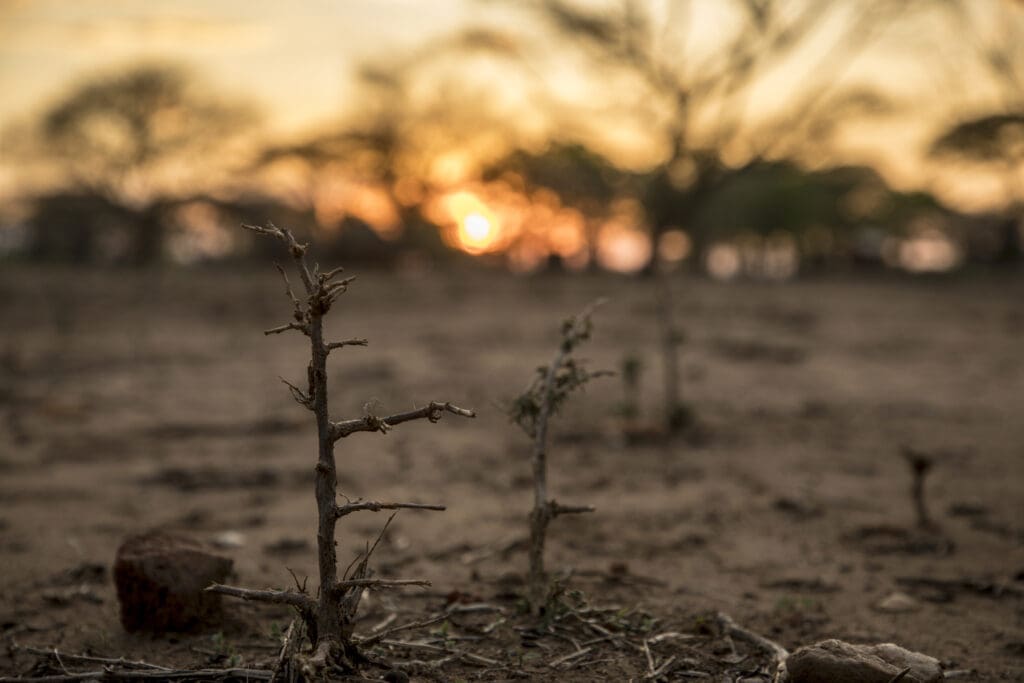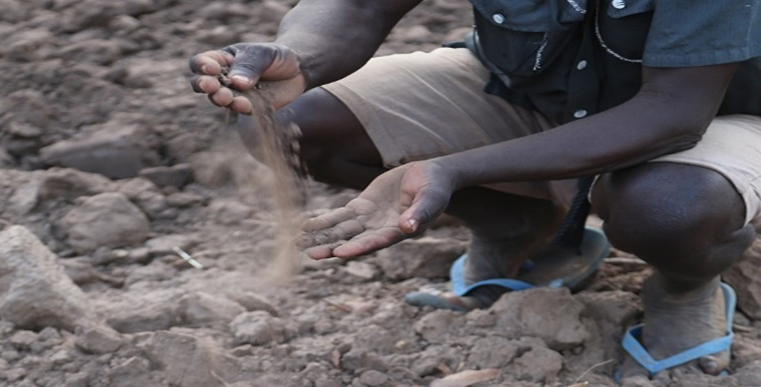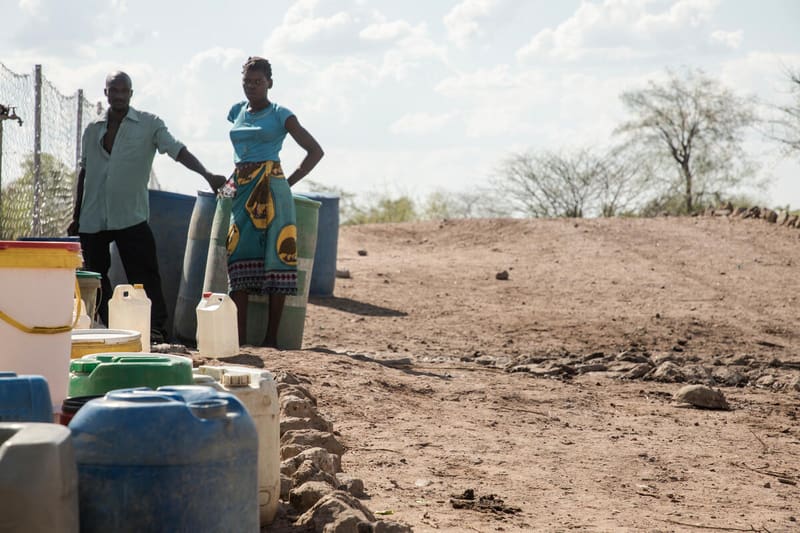
Eating Insects and Praying for Rain: Zimbabwe Is Gripped by Hunger
Driving through rural Zimbabwe in December 2020, the country doesn’t look like it should at this time of the year. Dried up rivers that should be flowing, cultivated land with no visible signs of a promising harvest and cattle scraping the ground with their hooves for food.
For the third consecutive year, Zimbabwe experienced drought — the worst the country has seen in 40 years and leaving almost half the population unsure of where they’ll find their next meal. At the peak of this year’s hunger season, 3.4 million people will be in crisis levels of hunger due to climate change and COVID-19 lockdowns.

Hotter than normal temperatures and nearly no rain have led to drought in Zimbabwe and caused these crops to dry up, sending even more people into hunger.
Elias Shamba, 53, is a small-scale farmer in Munyuki village in Mazambara, southwestern Zimbabwe. He and his brother Nicholas, 35, are growing cotton, corn and sorghum. Last year’s harvest only lasted them from February until May.
“It’s supposed to last until the next year’s harvest,” says Elias — but for the past seven months they’ve relied on food assistance from WFP.
Elias is currently on his third round of planting after the first two failed —it’s the first time this has happened in a single planting season. In January 2020, drought left farmers like Elias unable to harvest even half of the corn needed to make it through the year.

Elias is trying to grown cotton and sorghum.
“We started planting cotton on Nov. 1 with the first rains, but with the drought and the heat, it all died. So we tried planting cotton again, and small grains — sorghum,” he says. “We are waiting and praying for the rains.”
Elias and his brother receive food as part of a WFP program designed to help farmers deal with drought and climate change.
When food assistance runs out, Elias and his family will be forced to take extraordinary measures to feed themselves, including eating insects and wild foods.

Elias’s daughter holding a plate of cicadas which the family eats when WFP food has run out.
Elias says: “When we don’t have food we go and catch the insects that you hear making noise in the background, we eat them as relish.”
Through the WFP project, small-scale farmers such as him work to rehabilitate or build agricultural infrastructure in exchange for food. Elias carries rocks and gravel to build a nearby dam and receives WFP food for his family in return. Every month, each participant receives 120 pounds of sorghum, 24 pounds of cowpeas and 1 gallon of vegetable oil.
Compound shock
Zimbabwe’s hunger crisis is part of an unprecedented drought gripping southern Africa and has been exacerbated by the worst economic downturn the country has seen in a decade.
Inflation rates are among the highest in the world, putting food beyond the reach of increasing numbers of people. Zimbabwe’s newly introduced Zimbabwean dollar lost about 85 percent against the dollar between February and December 2019. The impact of COVID-19 has also disproportionally hit urban areas, leaving nearly 83% of urban households unable to buy food to feed their families.

Sellers and shop owners are not making much money themselves and say their food is rotting in the markets as most people can’t buy it.
At Sukubva, the second largest market in Zimbabwe, Gladys Chikukwa, 37, sells tomatoes. A member of the market committee, she says food prices are affecting her too.
“Just because we are selling tomatoes in this market doesn’t mean that we have enough food for ourselves. We are seriously struggling,” she says. “Our produce is rotting in this market because of prices. Today, tomatoes will go for 250 Zimbabwe dollars (ZWL), tomorrow 300 dollars, the next day 400 dollars and people don’t have that money.”
In early 2020, bread cost 20 times what it cost six months prior. High food prices are forcing families to eat less, skip meals, take children out of school, sell off precious assets and fall into a vicious cycle of debt.

Through WFP’s Food Assistance for Assets program, villagers created a Nutrition Garden that provides water for 450 households and nearly 500 cattle.
Inflation and consequent cash shortage and rising prices have forced WFP to switch its predominantly cash assistance in rural areas to providing staple food rations.
WFP’s scale-up to reach more than 4 million people across the country hinges on receiving adequate funding for this major logistical undertaking. It can take up to three months for funding commitments to become food on people’s tables.




